
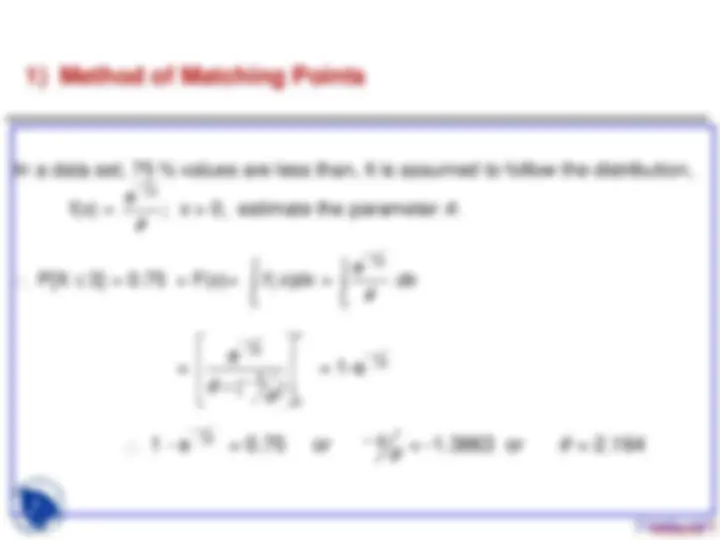
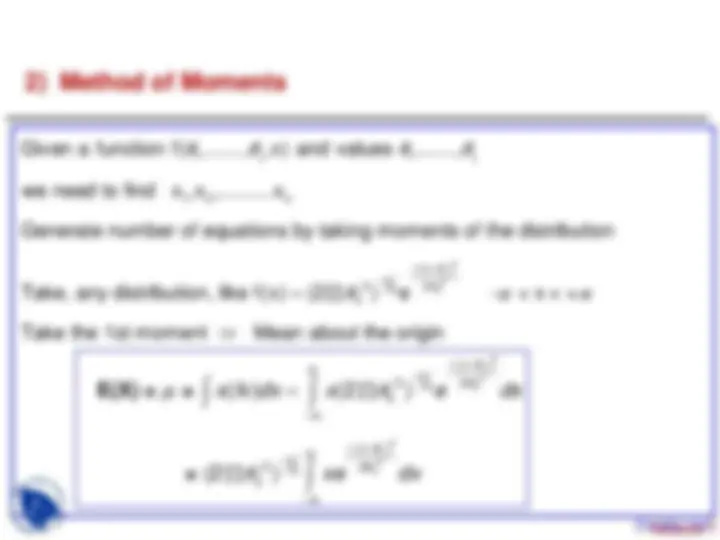
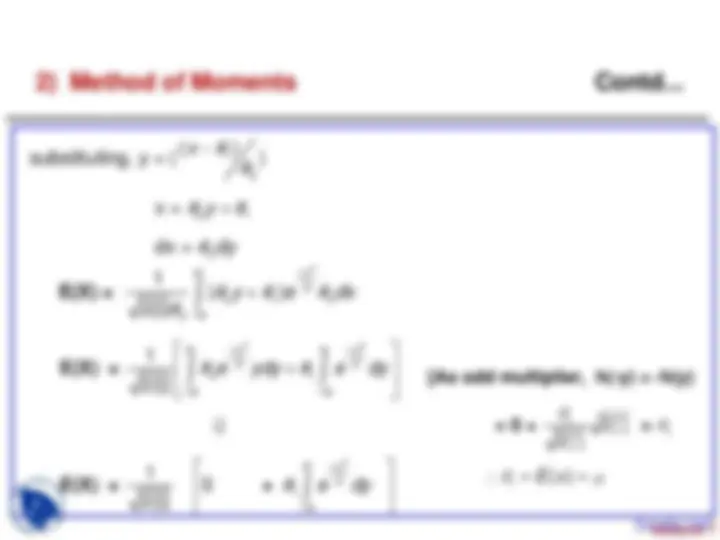
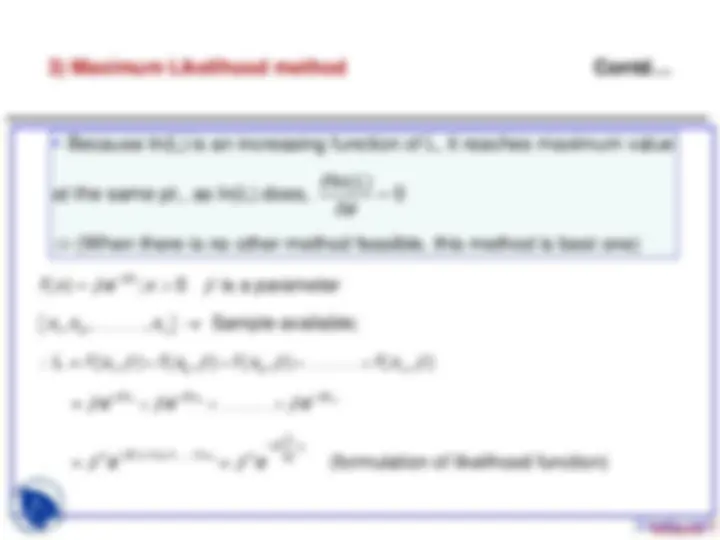
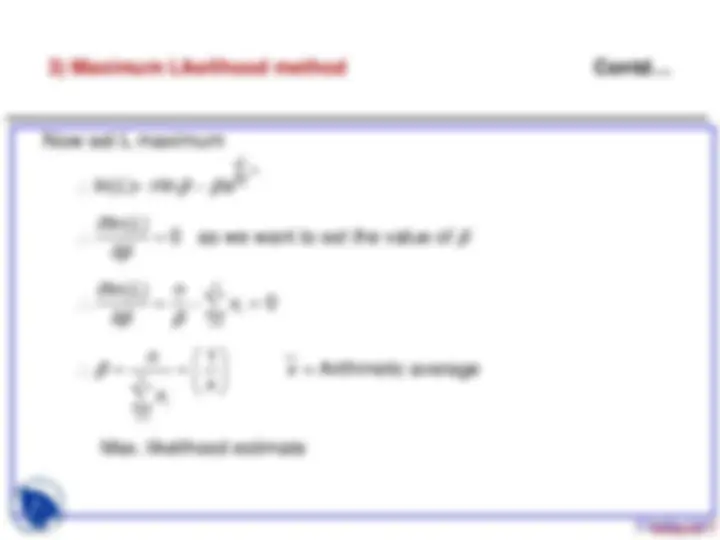
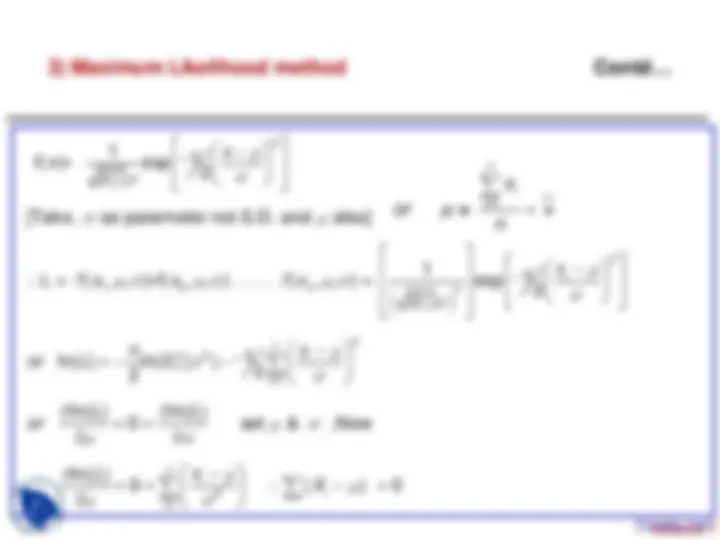
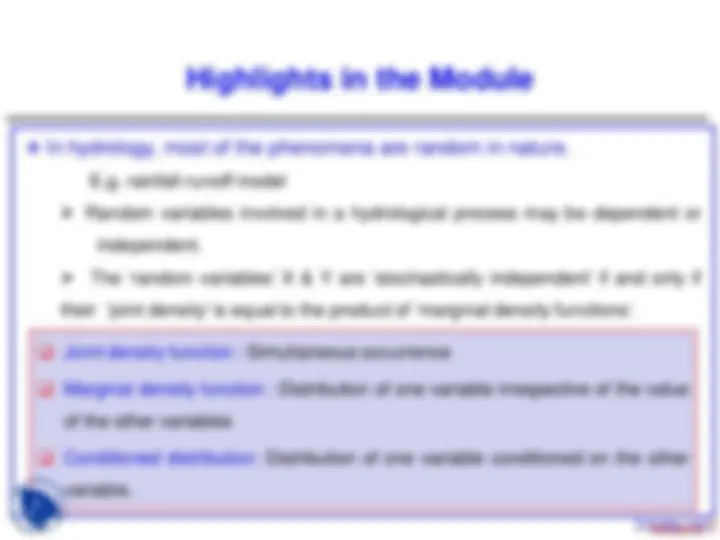
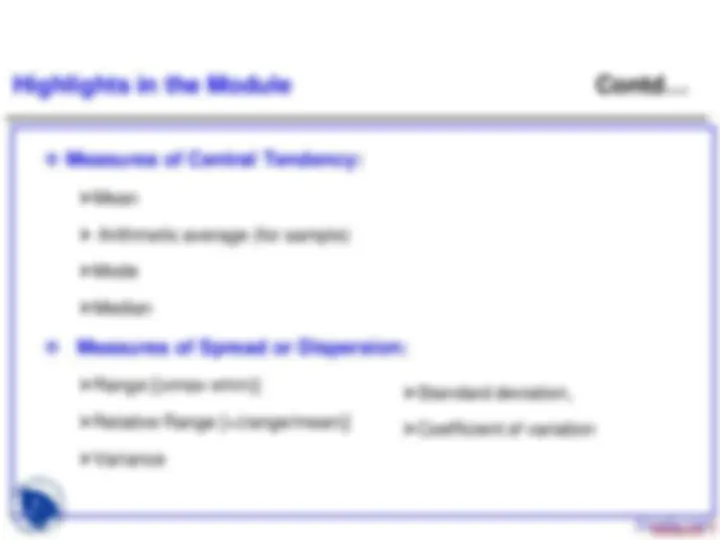
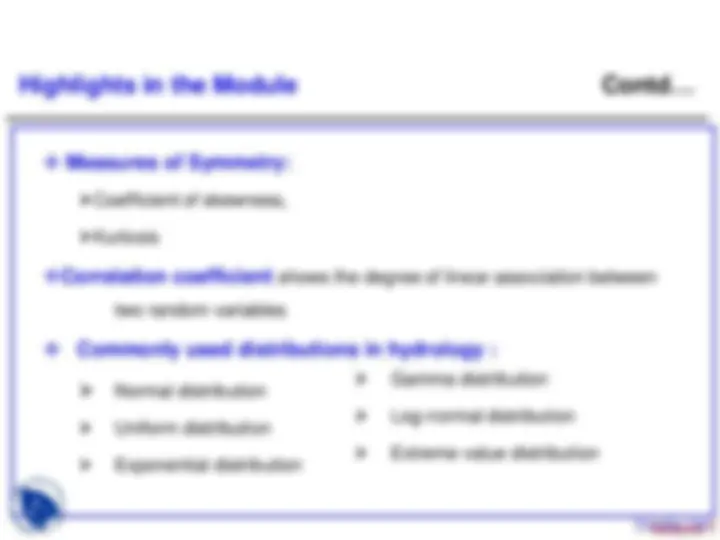


Study with the several resources on Docsity

Earn points by helping other students or get them with a premium plan


Prepare for your exams
Study with the several resources on Docsity

Earn points to download
Earn points by helping other students or get them with a premium plan
Community
Ask the community for help and clear up your study doubts
Discover the best universities in your country according to Docsity users
Free resources
Download our free guides on studying techniques, anxiety management strategies, and thesis advice from Docsity tutors
These are the Lecture Slides of Advanced Hydrology which includes Method of Matching Points, Method of Moments, Maximum Likelihood Method, Population Parameter, Sample Parameter, Estimation etc.Key important points are: Statistical Parameter Estimation, Method of Matching Points, Method of Moments, Maximum Likelihood Method, Population Parameter, Sample Parameter, Estimation
Typology: Slides
1 / 16

This page cannot be seen from the preview
Don't miss anything!










Docsity.com
Method of Matching Points
Method of Moments
Maximum Likelihood method
θ
θ
θ
θ θ
i
i
i
i i
Docsity.com
2) Method of Moments
θ θ θ θ i j i j
1 2 n
θ
θ
θ α α
− −
−
2
1
2
2
( x )
1 2 2 2
2
θ α
θ
α
θ α
θ
α
μ θ
θ
− −
−
−
− −
−
−
= ∏
∏
∫ ∫
∫
2 1 2 2 2 1 2 2 ( )
1 2 2 2
2
( )
1 2 2 2
2
( ) (2 )
(2 )
x
x
x fx dx x e dx
xe dx
E(X) = =
=
Docsity.com
2) Method of Moments Contd...
α
α
−
−
∫
2
2
2 1 2
2
y
1
2
2 1
2
α α
α α
α
α
− −
− −
−
−
∫ ∫
∫
2 2
2
2 2
2 1
2
1
y y
y
1
1
1
E x ( )
[As odd multiplier, h(-y) = -h(y)
Docsity.com
3) Maximum Likelihood method
1 1
1 2 3
We have the following, ( ; ) ( ; ) ( ; )
i i
Sample
x
f x f x f x
x
1 3
Product of ( ; ) ( ; ) is "likelihood " L
If L( ; ) ( ; ), then is the estimate preferred,
which maxmizes the likelihood function.
θ θ
θ θ θ
× × ≈
∗
∗
i i
f x f x
x f x
( ; θ ) → evaluated at x = x i i
Docsity.com
{ }
1 2
1 2 ) 1
1 2
1 2 3
(
( ) ; 0 is a parameter
, , , Sample available;
= = (formulation of like
n
n
i
n i
x
n
n
x x x
x
n x^ x^ x n
f x e x
x x x
f x f x f x f x
e e e
e e
β
β β β
β
β
β β
β β β β
β β β
β β
=
−
− − −
−
− + + +
lihood function)
θ
Docsity.com
=
2
2
1 2
2
2
( ) exp
[Take, as parameter not S.D. and also]
L = ( , , ) ( , , ) ( , , ) = exp
ln( ) ln(2 )
i
n (^) n
i
i
x
f x
x
f x f x f x
n x
or L
=
1
2
1
ln( ) ln( )
0 set & ,Now
ln( )
n
n
i
i
i
or
L x
1
n
i
i
μ
=
Docsity.com
2
2
1 2
2
2
1 1 ( ) exp
2 2
1 1 ( , , ) ( , , ) ( , , ) exp
2
2
1 ln( ) ln(2 )
2 2
μ
σ σ
σ μ
μ
μ σ μ σ μ σ
σ
σ
μ
σ
σ
− − =
∏
− − ∴ (^)
^ ∏
− − = − ∏ −
[Take, as parameter not S.D. and also]
L = =
i
n (^) n
i
x
f x
x
f x f x f x
n x
or L
1
2
1
ln( ) ln( )
0
ln( )
0
( ) 0
μ σ
μ σ
μ
μ σ
μ
=
=
∂ ∂
= =
∂ ∂
∂ −
= =
∂
∴ − =
∑
∑
∑
set & ,Now
n i n i i i
L L
or
L x
X
Docsity.com
E.g. rainfall-runoff model
Random variables involved in a hydrological process may be dependent or
independent.
The ‘random variables’ X & Y are ‘stochastically independent’ if and only if
their ‘joint density’ is equal to the product of ‘marginal density functions’.
Joint density function : Simultaneous occurrence
Marginal density function : Distribution of one variable irrespective of the value
of the other variables
Conditioned distribution: Distribution of one variable conditioned on the other
variable.
Docsity.com
Mean
Arithmetic average (for sample)
Mode
Median
Range [(xmax-xmin)]
Relative Range [=(range/mean)]
Variance
Highlights in the Module Contd…
Standard deviation,
Coefficient of variation
Docsity.com
Method of Matching Points
Method of Moments
Maximum Likelihood method
Highlights in the Module Contd…
Docsity.com